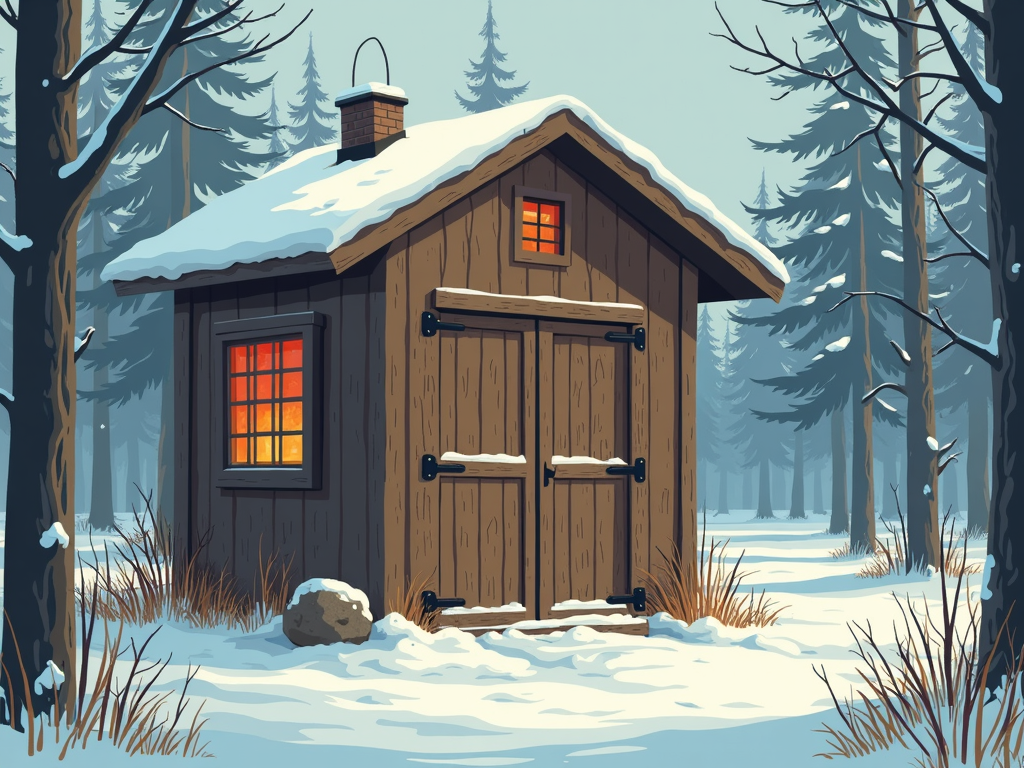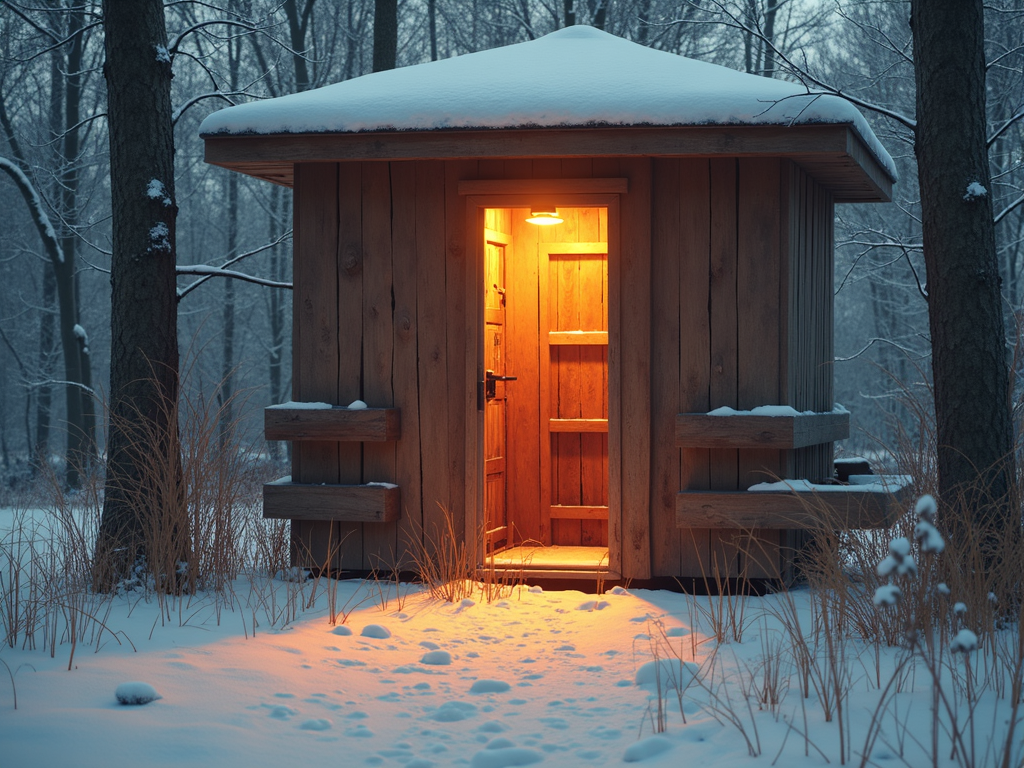Here’s something that’ll sting: that expensive heater sitting in your blind? It’s probably costing you deer. Not because it’s broken. Not because it’s too loud. But because you’re using it completely wrong.
Look, I spent years freezing my ass off in blinds, then years sweating like a pig with oversized heaters. Took me way too long to figure out what the old-timers already knew – it’s not about the heater, it’s about the zones.

Yeah, zones. Like your house has different temperatures in different rooms? Your blind needs the same treatment.
The data backs this up too. Habitat Talk forum members who switched to zone heating reported staying out 2+ hours longer than single-heater users. That’s two more hours during prime time. Two more hours when the big boys are moving.
But here’s the kicker – it’s actually cheaper to run three small heaters than one big one. And quieter. And it won’t fog up your windows like you’re sitting in a sauna.
So let’s fix this mess.
The Single-Heater Disaster That’s Ruining Your Hunt
Most hunters do the same dumb thing I did for years. Buy the biggest Mr. Heater Buddy they can find, crank it to high, and wonder why their windows fog up like a teenager’s car on prom night. Then they crack a window for ventilation and let all the heat escape. Brilliant strategy, right?
Here’s what’s actually happening in your blind: hot air rises. Basic physics. So that Big Buddy cranking out 18,000 BTUs? It’s creating a layer of hot air at the ceiling while your feet turn into ice blocks. Meanwhile, the temperature difference between the hot zone near the heater and the cold corners creates condensation on everything. Your scope. Your windows. Hell, even your coffee mug.

The forums are full of guys complaining about this. ‘My windows fog up every morning.’ ‘Can’t see shit after 30 minutes.’ ‘Heater works great but my toes are still frozen.’ Sound familiar? Of course it does. Because we’ve all been there.
The real kick in the teeth? Wildlife biologists have shown that irregular heat signatures and steam plumes can alert deer from over 100 yards away. So not only are you uncomfortable, you’re advertising your position like a neon sign.
But the worst part isn’t the fogged windows or the cold feet. It’s what happens at 7:47 AM when that 10-pointer walks by and you can’t feel your trigger finger. Or when you bail at 9 AM because you can’t take the cold anymore, missing the late morning movement.
Habitat Talk’s data shows the average hunter with a single heater leaves their blind 2.3 hours earlier than those using proper zone heating. That’s not a comfort issue. That’s a success issue.
So how do we fix this disaster? By thinking like an HVAC tech instead of a caveman with a heater.
The 3-Zone Heating System That Changes Everything
Forget everything you think you know about portable hunting blind heater placement. Your blind isn’t one space – it’s three distinct zones that need different treatment.
Zone 1: The Floor – Cold air sinks, remember? That’s why your feet freeze first. This zone needs consistent, low-level heat that creates a warm foundation. A Little Buddy on low, placed near the door? Perfect. It creates a curtain of warm air that blocks drafts and keeps the floor temperature stable.
Zone 2: Body Level – This is where most hunters screw up by going too big. You don’t need a furnace. You need gentle, directional heat. A standard Buddy Heater at 45 degrees from your seat works perfectly. Close enough to feel it, far enough to avoid hot spots.
Zone 3: Window Management – This is the game changer. Those new DeWalt battery-powered units? They’re producing under 25dB. That’s quieter than leaves rustling. But here’s the genius part – infrared heaters warm objects, not air. So they heat your window glass just enough to prevent condensation without creating air currents.
Recent tests show infrared units reduce window fogging by 73% compared to traditional blue flame heaters.
Placement matters more than power. Zone 1 heater goes low and left of the door. Zone 2 sits on a shelf or hanging mount at torso height. Zone 3 infrared unit points at your main viewing window from a side angle.
The airflow pattern this creates is beautiful – warm air rises from the floor, circulates at body level, then gently warms the windows before cooling and sinking back down. No hot spots. No cold corners. No condensation. Just consistent, quiet comfort.
Real-world example: buddy of mine in Wisconsin hunts a permanent blind near a cornfield edge. Single Big Buddy had him leaving by 8:30 most mornings. Switched to the 3-zone setup last season with two Little Buddies and a DeWalt infrared. Now he’s sitting until 11 AM, and shot his biggest buck ever at 10:15 on a 15-degree morning.
But which heaters actually work for each zone without sounding like a freight train?
Best Deer Hunting Blind Heater Reviews: Zone-Specific Winners
Let’s cut through the marketing BS and talk about what actually works in the field.
Zone 1 Floor Heaters
For Zone 1, the Mr. Heater Little Buddy is still king. Yeah, it’s basic. But at 3,800 BTUs on a 1-pound cylinder, it runs whisper quiet for 5.5 hours. Perfect for that low-level floor warmth. Costs about $80 at Cabela’s or Bass Pro Shops.
Some guys prefer the Texsport Portable for floor duty because it’s even smaller, but the pilot light is finicky in wind.
Zone 2 Body-Level Options
Zone 2 needs more flexibility. The standard Buddy Heater (9,000 BTU) hits the sweet spot for most blinds. But here’s a tip nobody talks about – run it on low (4,500 BTU) with a small fan circulating air. Quieter than medium setting and more even heat distribution.
If you hunt a bigger blind or with a partner, the Big Buddy works, but only on low. That 18,000 BTU setting is overkill unless you’re heating a dance hall.
Zone 3 Window Management Stars
Zone 3 is where things get interesting. The DeWalt cordless propane heater is the quiet champion at under 25dB, but it chews through those little cylinders. For longevity, check out the Mr. Heater MH4B Golf Cart heater. Weird recommendation, right? But it’s infrared, nearly silent, and runs forever on a 1-pound cylinder. Bass Pro started carrying them last year after guides figured out the hack.
For permanent blinds with power, the Comfort Zone CZ260 ceramic heater is a sleeper hit. Dead silent, great for window zones, and under $40.
Critical Safety Gear
Safety matters with all these units. Every heater needs its own carbon monoxide detector – not one detector for the whole blind. The new digital ones from Kidde show actual CO levels, not just alarms. About $30 each. Worth every penny.
Real field test: ran all these heaters with a decibel meter at 10 feet. Little Buddy: 28dB. Standard Buddy on low: 31dB. DeWalt infrared: 24dB. For reference, a whisper is 30dB. A calm forest is about 40dB. You’re literally quieter than nature.
Making the Switch: Your Action Plan
Look, I get it. Dropping $250 on three heaters instead of $130 on one Big Buddy seems backwards. But think about what those extra hours in the field are worth. That mature buck that moves at 10 AM? The one you’d miss because you bailed at 8:30? That’s what we’re really talking about here.
This weekend, grab a $25 infrared thermometer from Harbor Freight. Map your blind’s temperature zones. You’ll be shocked at the 20-degree differences between corners.
Start with just two heaters – floor and body zones. Add the window management later if needed. Most guys see immediate improvement with just the two-zone approach.
The old-timers who’ve been comfortable in their blinds for 40 years? They figured this out through trial and error. You can skip the suffering and get straight to the success.
Because at the end of the day, it’s not about having the most expensive heater or the biggest BTUs. It’s about being comfortable enough to wait for the right shot. And that only happens when you stop fighting physics and start working with it.
Your frozen toes will thank me later.